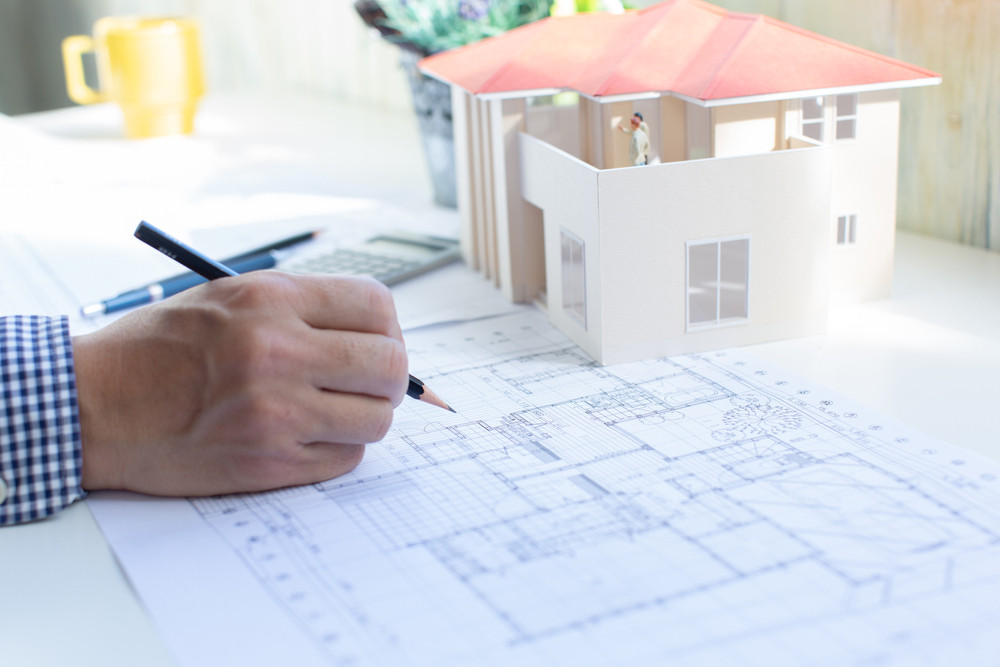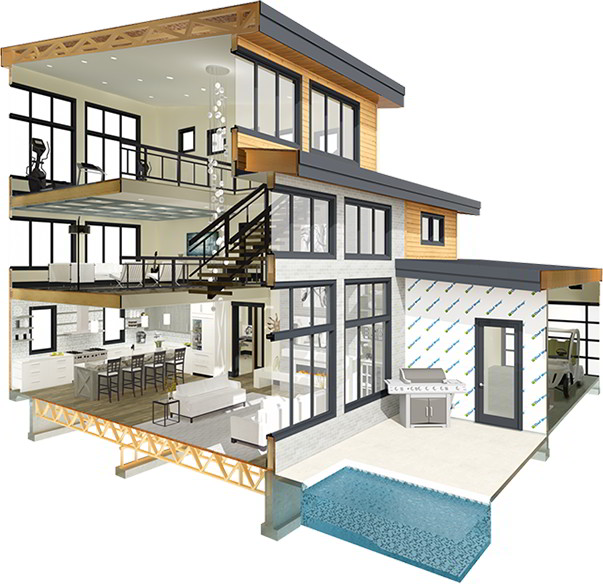The Creative Process Behind Successful Projects from CDA Architects
The Creative Process Behind Successful Projects from CDA Architects
Blog Article
Recognizing the Collaborative Process Between Designers and Designers in Modern Building Projects
The joint procedure between engineers and engineers is necessary in modern-day construction jobs, as it balances design intent with design expediency. This partnership not only affects the aesthetic and useful elements of a project however additionally plays a critical function in attending to sustainability difficulties. By utilizing reliable communication techniques and leveraging innovative modern technologies, such as Building Information Modeling (BIM), groups can function much more cohesively. Nonetheless, the ins and outs of this partnership commonly present distinct challenges that can hinder progression. Checking out these dynamics discloses insights that might dramatically affect task results and general sector criteria. cda architects.
The Importance of Cooperation
The joint synergy between engineers and engineers is vital for the successful understanding of any building job. This collaboration brings together distinctive proficiency and perspectives, making it possible for the integration of cutting-edge layout with functional engineering options. By interacting, designers and engineers can make sure that a task not just fulfills aesthetic and useful needs but likewise follows safety and security, sustainability, and financial restrictions.
Partnership cultivates a common vision, promoting the alignment of objectives and expectations from the start. This alignment is critical in attending to potential obstacles and mitigating risks that can emerge throughout the task lifecycle. Additionally, a collaborative strategy allows for the efficient allocation of sources, maximizing both time and expense.
The value of partnership includes the repetitive process of layout and construction, where feedback from engineers can educate architectural choices, resulting in even more possible and sustainable layouts. On the other hand, architects can inspire engineers to believe creatively regarding how to achieve architectural integrity without compromising creative intent. Inevitably, the joint partnership between designers and engineers is not merely useful; it is essential to the development of premium, functional, and ingenious built atmospheres that satisfy the demands of society.
Interaction Techniques and Devices
Reliable interaction methods and devices are crucial for cultivating partnership in between architects and designers throughout the project lifecycle. Establishing clear channels of interaction is necessary to ensure that all employee are aligned with job objectives, timelines, and responsibilities. Normal conferences, both in-person and online, offer chances for stakeholders to discuss progression, address issues, and make notified decisions.

Additionally, taking on collective communication devices, such as Slack or Microsoft Teams, permits instantaneous messaging, file sharing, and ongoing discussions, advertising a much more dexterous action to arising concerns. File monitoring systems likewise play a critical duty in arranging project documentation, making certain that all employee have accessibility to the most recent details.
Shared Goals and Job Vision
A merged job vision works as the structure for effective partnership in between engineers and designers (cda architects). This shared vision not just lines up the efforts of both parties yet additionally establishes a typical framework for decision-making throughout the task's lifecycle. By articulating clear objectives, stakeholders can efficiently browse the complexities of modern construction jobs, making sure that both visual and useful needs are fulfilled
Developing shared objectives includes open discussion and a comprehensive understanding of each discipline's payments. Engineers usually concentrate on layout intent, spatial partnerships, and user experience, while engineers stress structural integrity, systems functionality, and conformity with guidelines. When these point of views are aligned, the outcome is a natural job that follows both creative ambitions and technical usefulness.
Furthermore, a distinct task vision cultivates accountability amongst group participants, motivating each participant to take possession of their function in attaining the desired result. Routine check-ins and collective workshops can better reinforce this dedication, enabling for changes to be made as the task develops. Eventually, a shared vision not only improves synergy however likewise elevates the top quality of the final deliverable, bring about effective project conclusion.
The Role of Technology
Leveraging Website modern technology has become important in boosting partnership between designers and designers. Structure Info Modeling (BIM) stands out as a critical innovation, permitting both architects and designers to produce in-depth 3D models that envelop layout intent and structural honesty.
In addition, cloud-based systems make it possible for seamless collaboration, allowing project stakeholders to gain access to and upgrade project data from anywhere. This cultivates a culture of openness and responsibility, as changes can be tracked and assessed in real-time. In addition, mobile applications more improve communication, providing on-site groups with instant accessibility to project specifications and updates.
Emerging technologies such as synthetic knowledge and artificial intelligence are additionally starting to play a duty in anticipating analysis, assisting teams identify potential issues prior to they occur. Eventually, the function of modern technology in architecture-engineering partnership not just boosts process effectiveness yet likewise boosts development, causing even more effective task outcomes. By accepting these technological advancements, designers and engineers can make sure a more natural and productive joint procedure throughout the construction lifecycle.
Instance Researches in Effective Partnerships
Various study show the profound influence of efficient collaborations in between architects and engineers on task outcomes. One remarkable instance is the partnership on the High Line in New York City, where landscape designers, engineers, and urban planners collaborated to change an abandoned rail line right into a vivid public park. This multidisciplinary method not only enhanced the visual high quality yet additionally ensured architectural safety and security and environmental sustainability.

The Burj Khalifa in Dubai better demonstrates the significance of collective initiatives - cda architects. The integration of architecture and design experience enabled the job group to attain unprecedented heights while sticking to security laws content and visual vision
These examples highlight the importance of interaction, depend on, and shared purposes. In today's complicated building atmosphere, such partnerships are important to navigating obstacles and providing projects that satisfy both practical and visionary goals.
Verdict
In conclusion, the collaboration in between engineers and engineers check my reference is important for the success of modern construction projects. Reliable interaction techniques, a shared job vision, and the assimilation of innovative modern technologies are vital parts that promote this collaboration.
Report this page